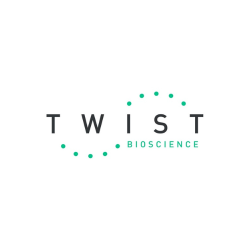Fernanda Tornos, a NGS Field Application Scientist Manager at Twist Biosciences briefly introduced Twist Biosciences and explained that its principal technology is DNA synthesis. The company has created a silicon platform that allows scientists to scale up DNA synthesis meaning that DNA can be created a lot faster. Twist’s key selling point is how it uses DNA within NGS with a specialised focus on target enrichment. This gives researchers the opportunity to focus on sequencing reads on specific regions of interest, significantly reducing data requirements and costs compared to whole-genome sequencing.
Twist’s workflow covers the entire process from DNA extraction to enriched library preparation, compatible with any sequencer or analysis provider. Instead of giving the audience an abstract explanation of how Twist’s different products work, Tornos gave three case studies demonstrating how different companies applied the technologies in different scenarios, showcasing their versatility.
The first case study, an epigenomics project showed that Twist’s methylation detection system enables sensitive, scalable assessment of methylation status in imprinted genes which is key for diagnosing rare disorders. Using custom panels, researchers achieved sensitive detection of methylation patterns, outperforming traditional methods like MLPA and arrays, and providing granular insights into patient genomes.
The second case study outlined a transcriptomics application which used Twist's RNA enrichment solutions, featuring the Exon Aware algorithm to improve detection of gene expression anomalies and isoforms. In a study of a foetus with severe developmental anomalies, Twist’s RNA enrichment solutions helped confirm the presence of aberrant mRNA escaping normal decay pathways. Their workflow ensures unbiased coverage of isoforms and fusions, enhancing the detection of gene expression anomalies.
Finally, Twist’s cfDNA workflow supports non-invasive monitoring of cancer markers in blood, enabling sensitive detection of minimal residual disease (MRD). The workflow achieves high library conversion rates and reliable mutation detection, validated in patient samples before and after treatment.
